Higher classification Ganoderma | Division Basidiomycota Scientific name Ganoderma applanatum Rank Species | |
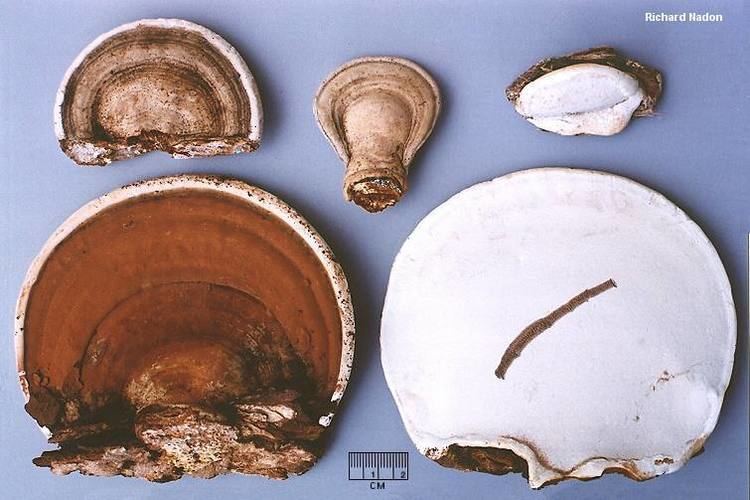 | ||
Similar Ganoderma, Fomes fomentarius, Fomitopsis pinicola, Ganodermataceae, Fomes | ||
Artist s fungi ganoderma applanatum on log
Ganoderma applanatum (the artist's bracket, artist's conk or bear bread) is a bracket fungus with a cosmopolitan distribution.
Contents
- Artist s fungi ganoderma applanatum on log
- Ganoderma applanatum fungi kingdom
- Medicinal Uses
- Fungivory
- References
This fungus grows as a mycelium within the wood of living and dead trees. It forms fruiting bodies that are up to 30–60 centimetres (12–24 in) across, hard, woody-textured, and inedible; they are white at first but soon turn dark red-brown. Brown spores are released from the pores on the underside of the fruiting body. The fruiting bodies are perennial, and may persist for multiple years, increasing in size and forming new layers of pores as they grow.
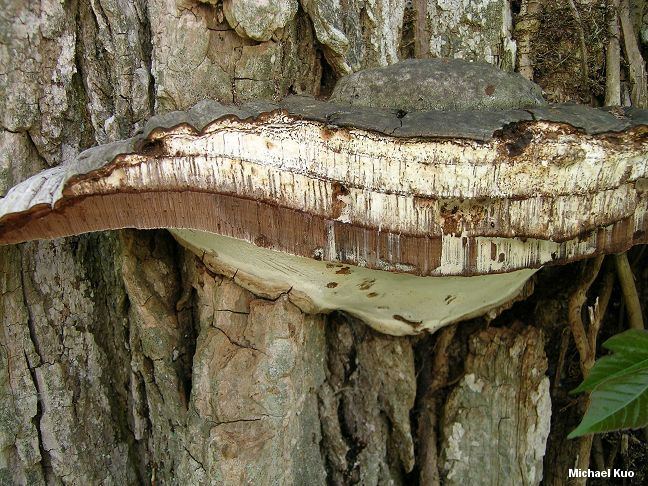
It is a wood-decay fungus, causing a rot of heartwood in a variety of trees. It can also grow as a pathogen of live sapwood, particularly on older trees. It is a common cause of decay and death of beech and poplar, and less often of several other tree genera, including alder, apple, elm, buckeye and horse chestnut, maple, oak, walnut, willow, western hemlock, Douglas Fir, and Spruce.

A peculiarity of this fungus lies in its use as a drawing medium for artists. When the fresh white pore surface is rubbed or scratched with a sharp implement, dark brown tissue under the pores is revealed, resulting in visible lines and shading that become permanent once the fungus is dried.
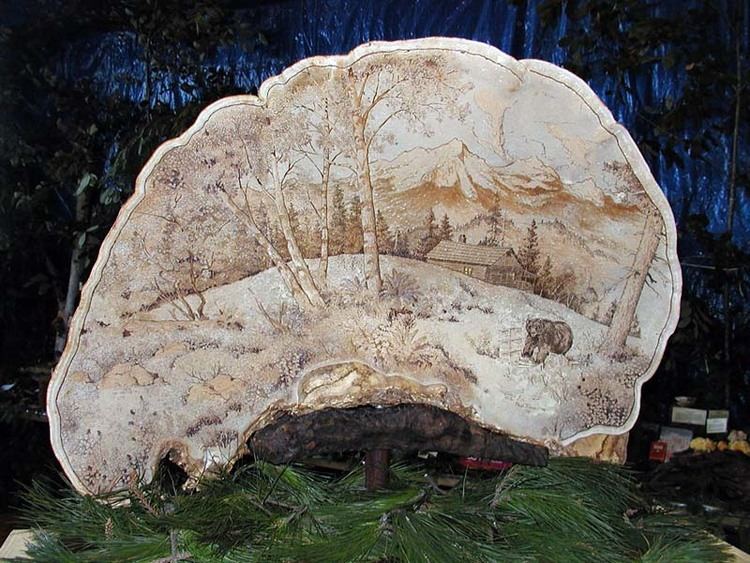
The Anne Frank tree in Amsterdam suffered rot from Ganoderma applanatum before it blew over in 2010.
Ganoderma applanatum fungi kingdom
Medicinal Uses
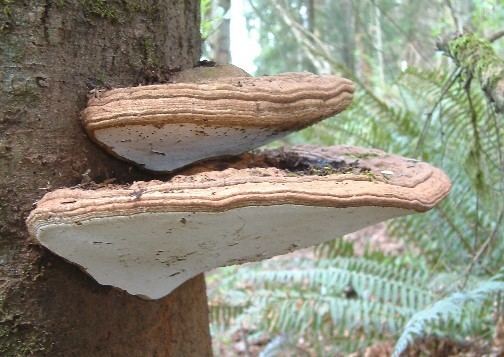
Ganoderma applanatum is known in Japan as kofuki-saru-no-koshikake (コフキサルノコシカケ), literally meaning "powder-covered monkey's bench", and in China as shu-she-ling-zhi (树舌灵芝), where it has long been used in traditional medicines. Studies have shown Ganoderma applanatum contains compounds with potent anti-tumor, antibacterial anti-fibrotic properties.
Fungivory
There is anecdotal references of higher primates consuming Ganoderma applanatum for self-medication.
In the book Gorillas In the Mist Dian Fossey writes the following about gorillas eating Ganoderma applanatum:
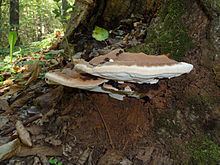
"Still another special food (for the gorillas) is bracket fungus (Ganoderma applanatum)... The shelflike projection is difficult to break free, so younger animals often have to wrap their arms and legs awkwardly around a trunk and content themselves by only gnawing at the delicacy. Older animals who succeed in breaking the fungus loose have been observed carrying it several hundred feet from its source, all the while guarding it possessively from more dominant individuals attempts to take it away. Both the scarcity of the fungus and the gorillas' liking of it cause many intragroup squabbles, a number of which are settled by the silverback, who simply takes the item of contention for himself."
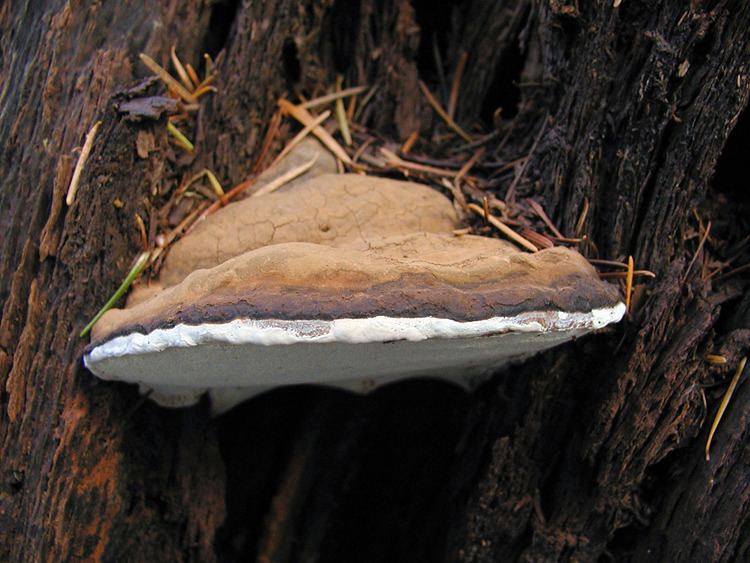
The midge Agathomyia wankowiczii (Platypezidae) lays its eggs on the fruiting body of the fungus, forming galls. The forked fungus beetle, Bolitotherus cornutus lives out its entire life cycle in the fruiting bodies of Ganoderma applanatum and a few other bracket fungi.
